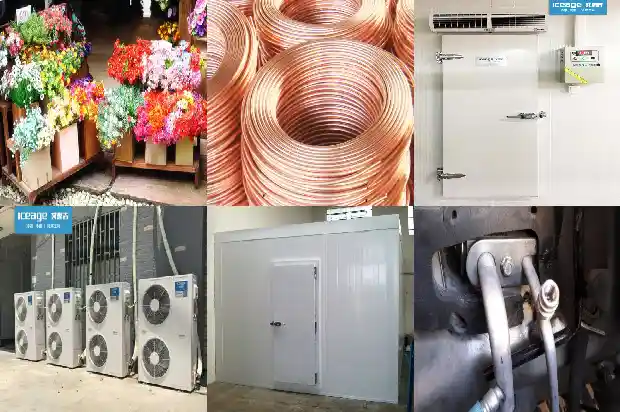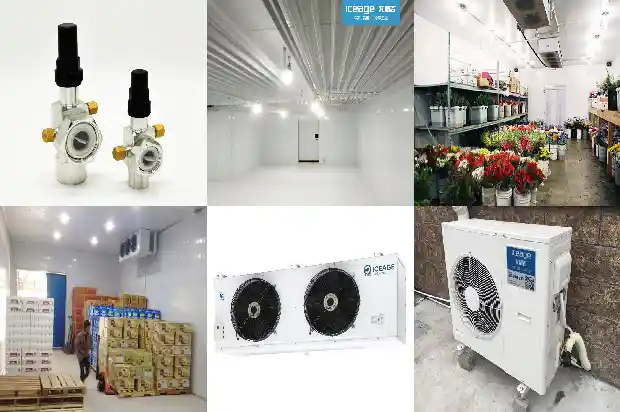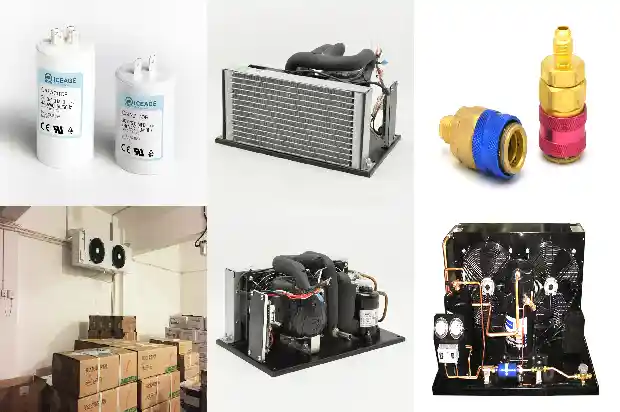What is Cascade Refrigeration?
2025-02-15
Cascade refrigeration refers to a refrigeration device composed of two or more single - stage (or two - stage) compression refrigeration cycle systems using two or more refrigerants. It is generally used in low - temperature facilities with temperatures ranging from - 120°C to - 60°C, such as ultra - low - temperature cold storages, rapid freezing process facilities, the biological and chemical industrial fields that require ultra - low - temperature processes, and cryogenic chambers.
In a common cascade refrigeration device, the system structure is divided into a high - temperature stage part and a low - temperature stage part. The high - temperature part uses a medium - temperature refrigerant, and the low - temperature part uses a low - temperature refrigerant. The evaporation of the refrigerant in the high - temperature part causes the refrigerant in the low - temperature part to condense. The two parts are connected by a condenser - evaporator to form an integrated unit. The condenser - evaporator serves as both the evaporator of the high - temperature part and the condenser of the low - temperature part.
I. Low - temperature Stage Part
The low - temperature refrigerant gas from the evaporator passes through the low - temperature stage regenerator and then is compressed by the low - temperature stage compressor and enters the oil separator.


II. High - temperature Stage Part
The high - temperature refrigerant gas that evaporates after absorbing heat in the condenser - evaporator is sucked in and compressed by the high - temperature stage compressor and then enters the air - cooled condenser to condense, releasing heat to the cooling medium. The condensed high - temperature refrigerant liquid enters the liquid receiver, and then passes through the drier - filter and the throttle valve to enter the condenser - evaporator, completing a refrigeration cycle.

Different from ordinary single - stage compression refrigeration devices, cascade refrigeration devices have two special components: the condenser - evaporator and the expansion vessel. Among them:
I. Condenser - evaporator
Generally, a double - pipe heat exchanger or a plate - type heat exchanger is used.

II. Expansion Vessel
After the cascade refrigeration device stops operating, the temperature of each part of the system will gradually rise. The low - temperature refrigerant will vaporize into steam, and the pressure will continue to increase. Since other components and pipelines in the refrigeration device have a certain limit of pressure - bearing capacity, in order to prevent the pressure from rising beyond the limit value, an expansion vessel is installed in the low - temperature part. When the pressure reaches a certain value, the pressure control valve automatically opens, allowing a part of the refrigerant to enter the expansion vessel, restricting the pressure in the system from being too high.
When starting the cascade refrigeration device, generally, the high - temperature part is started first, and then the low - temperature part. The operation should be carried out strictly in accordance with the manufacturer's requirements.
Related Articles
- Have You Encountered the Three Common Problems of Refrigeration Compressors?
- How to Calculate Refrigeration Load? And What Are the Issues?
- What to Do if the Compressor of a Frozen and Refrigerated Display Cabinet Runs but the Refrigeration Effect Is Poor?
- Instructions for Welding and Drainage in the Installation of Refrigeration Equipment Pipelines
- Common Pressure Valves and Protection Devices in Refrigeration Units
- Precautions for Using Rotary Refrigeration Compressors
- What Misconceptions Should Be Avoided in Low - temperature Refrigeration System Repairs
- Essential for Maintenance! Parameters and Phenomena of Normal Operation of Refrigeration and Heating Systems
- Composition and Common Faults of Screw Refrigeration Compressors
- How to Read the High - and Low - Pressure Gauges of Refrigeration Air - conditioners?
- Introduction to Control Valves in Refrigeration Systems
- Welding Equipment Used in Refrigeration System Maintenance
- Where Lie the Key Construction Technologies of the Ammonia Refrigeration System?
- What to Do When a Refrigeration Unit Malfunctions?
- Could a Tiny Copper Tube Cause a Multi - split Air Conditioner to Stop Cooling? Refrigeration Workers Must Pay Attention!
- Has Your Refrigeration System Experienced "Oil Carry - over"?
- Basic Knowledge of Valve - type Components in Refrigeration Systems (Technical Sharing)
- Maintenance Techniques for Air - conditioning Refrigeration Systems
